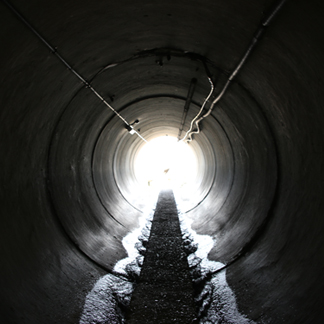
Sanitary Sewers v. Storm Water Sewers: What’s the Difference?
When you think about storm and sanitary drainage systems, you assume they must all go to the same place. Because if you’ve seen one drain, then you’ve seen them all, right? Fluids go in and they head right on through a network of pipes and end up at the water treatment plant.
Not so fast. Those statements are far from the truth.
At the end of the day, they most certainly do not go to the same place. And it’s important to understand how they are different and why they have different endpoints.
A storm drainage system (a.k.a storm sewer) is a complex network of underground pipes and structures transporting untreated stormwater from curbside drains, open ditches, and dikes and discharging them into channels or open bodies of water. There are also older buildings with basement floor drains that lead to the storm sewer system.
The storm sewer plays an essential role in controlling the quantity, quality, timing, and distribution of storm runoff. Without a reliable storm drainage system, there is potential for building flooding, vehicle accidents, or damage to roadways.
Sanitary drainage systems are the underground pipes designed to carry sewage discharged from plumbing fixtures located in bathrooms, sinks, kitchens, and other areas with a waste drain. Once the sewage reaches its destination whether it be an approved point of disposal like a septic tank awaiting future transport or wastewater plants, the sewage is filtered, treated, and recycled.
It is important to know the difference between the two systems because if the effluent is discharged into them incorrectly, the repercussions can be detrimental to the environment or result in legal ramifications.
Consider this, if sewage or household chemicals were dispensed into an open body of water, wildlife could be afflicted and result in lingering damage. Also, a befouled water system has the potential to negatively affect local businesses and organizations that rely on that water for the construction of materials. If that doesn’t drive the point home, then consider how it can also find its way into drinking supplies.
When hazardous substances like paints, oils, cleaning solutions make their way to the incorrect location, the effects are felt for years to come. With that, we at Yagla Engineering Services are well-versed in plumbing operations and will implement a sanitary drainage system that keeps you and the environment safe. As time progresses, continuously monitor the condition of your drainage system. And should an issue occur, we’ll get your system back on track.
Always remember, knowing the difference between the two drainage systems is crucial to the status of your business operations and the overall ecosystem.
